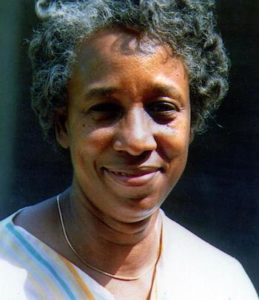
Jessie Price
*Jessie Price was born on this date in 1930. She was a Black veterinary microbiologist. She isolated and reproduced the cause of the most common life-threatening disease in duck farming in the 1950s and developed vaccines for this and other avian diseases.
Early life and education.
Jessie Isabelle Price was born in Montrose, Pennsylvania. Her mother, Teresa Price, raised her daughter independently in difficult financial circumstances. Price was the only Black girl in her class at a school with only two other Black students. After graduating from Montrose High School, she was accepted into Cornell University, moving with her mother to Ithaca to take advanced high classes in mathematics and English for a year. Tuition fees were waived because of her New York residency and grades. She wanted to be a physician but could not because of the cost.
Price gained a Bachelor of Science in the College of Agriculture in 1953. Her mentor, Dorsey Bruner, recommended post-graduate studies, but finances prohibited it. Price worked for three years as a laboratory technician at the Poultry Disease Research Farm at the Veterinary College at Cornell to save for further study. She gained research assistant support from 1956 to 1959, a master's in 1958, and a doctorate in 1959. Her Master's thesis was "Morphological and Cultural Studies of Pleuropneumonia-like Organisms and Their Variants Isolated from Chickens."
Avian disease research and vaccine development
Long Island "New Duck Disease" is an infectious disease affecting primarily ducklings, with a high mortality rate. In 1956, the United States Department of Agriculture (USDA) reported that it was "the most important disease problem of the duck industry," with losses of up to 75% of the population. For her doctoral work, Price isolated and reproduced Pasteurella anatipestifer, an essential step for vaccine development. While at the Cornell Duck Research Laboratory, she began working on vaccine development for Pasteurella anatipestifer for white Pekin ducks, which she would continue in avian cholera and TB for various species throughout her career.
Some of the vaccines were commercially developed. She worked with national and international colleagues, publishing on Pasteurella anatipestifer in pheasants, medication for bacterial infections in ducklings, Pasteurella multocida in Nebraska wetlands, and snow geese. For her doctoral dissertation, Price isolated and reproduced the bacterium Pasteurella anatipestifer in white Pekin ("Long Island") ducklings infected with a disease that was a major killer among duck farmers. Her dissertation was published by Cornell University in 1959.
Career and later life
After her Ph.D., Price joined the Cornell Duck Research Laboratory, where she worked from 1959 to 1977, teaching at Long Island University, where she became an adjunct professor. She worked on developing a vaccine, undertaking trials of mixed flocks of vaccinated and unvaccinated ducklings, working daily, and conducting daily autopsies. In 1964, Ebony magazine featured Price and her work in an extensive photo essay describing and showing her work on vaccine development in the Duck Research Laboratory and on the farm. Price describes the heavy workload, made more onerous by the four-mile distance between the laboratory and the farm where the flocks of ducklings were managed.

1966, Price was awarded a National Science Foundation travel grant to present her findings at the International Congress for Microbiology in Moscow. By 1974, she had developed an injectable vaccine and was moving on to studying oral vaccination. She moved to the USGS National Wildlife Health Center in Madison, Wisconsin, 1977 and studied environmental contaminants and diseases in wildlife, especially waterfowl. Her professional activities included chairing the Predoctoral Minority Fellowship Ad Hoc Review Committee of the American Society for Microbiology (ASM) and its Summer Research Fellowship and Travel Award Program. Price was also a member of the ASM's Committee on the Status of Minority Microbiologists and its Committee on Women Microbiologists.
She was also active in Graduate Women in Science (also called Sigma Delta Epsilon), serving as national president from 1974 to 1975, after being national second vice-president (1972-1973), as well as on the national board of directors (1976-1980). She was a dog-lover and breeder with a prize-winning Corgi in the 1960s. Her other favorite pastimes were photography, music, and travel. Jessie Price died of Lewy body dementia on November 12, 2015, in Madison and was buried in Quoque Cemetery on Long Island.